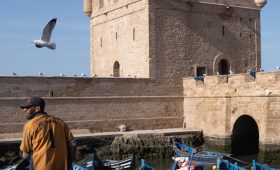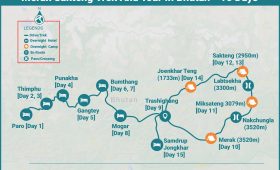Mount Bintumani: A Journey to Sierra Leone’s Highest Peak
Mount Bintumani, also known as Loma Mansa, stands as the highest peak in Sierra Leone and the Loma Mountains, reaching an impressive 1,945 meters (6,381 feet). This majestic mountain is nestled within the lush rainforests of the Koinadugu District, offering a unique blend of natural beauty and biodiversity. The lower slopes are teeming with wildlife, including pygmy hippopotamuses, dwarf crocodiles, rufous fishing-owls, and a variety of primates.
Getting There
Your adventure begins in Freetown, Sierra Leone’s capital. From there, a scenic drive will take you to Kabala, a charming town that serves as the gateway to the Loma Mountains. If direct buses to Kabala are unavailable, consider traveling via Makeni. Once in Kabala, head to the central roundabout, where you’ll find motorbike taxis ready to take you on a thrilling three-hour ride to Sinekoro village, the starting point for your hike. Expect to pay around $20 USD for this off-road adventure.
The Hike
Climbing Mount Bintumani is a non-technical yet challenging endeavor, best suited for those with a good level of fitness. The hike spans approximately 29 kilometers round trip, starting at 400 meters above sea level in Sinekoro and culminating at the summit. The journey takes you through dense rainforest and grassy slopes, with steep sections that test your endurance. Plan for a two-day trek, spending the night at Camp 2, where you’ll find basic facilities and a nearby waterfall.
Permits and Guides
Before setting off, it’s essential to seek permission from the local chief in Sinekoro. Expect to pay a negotiable fee between $5 and $20 USD. Hiring a local guide is highly recommended for safety and cultural insights, costing around $9 USD per day. While porters are available, most hikers find them unnecessary for this short trek.
Unique Experiences
Camping Under the Stars
Camping on Mount Bintumani offers a rare opportunity to connect with nature. Fall asleep to the sounds of the rainforest and wake up to stunning sunrise views. While accommodation is free, it’s courteous to ask the chief for arrangements, which might include sleeping at a local school or the chief’s residence.
Wildlife Encounters
The mountain’s rainforest is a haven for diverse wildlife. Keep an eye out for exotic birds, playful monkeys, and the elusive pygmy hippopotamus. Remember to respect their habitat and observe from a distance.
Cultural Immersion
Engage with the local communities to enrich your experience. Learn about their customs, participate in traditional ceremonies, and savor local delicacies. These interactions offer a deeper understanding of the region’s culture and traditions.
Practical Tips
- Best Time to Visit: The dry season from November to April is ideal for hiking, with milder weather and less muddy trails. The wet season from May to October offers a different charm but requires preparation for slippery conditions.
- Food and Drink: Food options in the village are limited to staples like rice and bread. Consider arranging meals with locals and donate generously. Water is available from streams at camps, but bring purification tablets.
- Safety and Gear: Pack a mosquito net, warmer clothes for chilly nights at higher altitudes, and a power bank for electronics. There is no electricity in the village.
Embarking on a journey to Mount Bintumani is a rewarding experience for those seeking adventure and cultural immersion. With its breathtaking landscapes and rich biodiversity, this trek promises memories that will last a lifetime.




